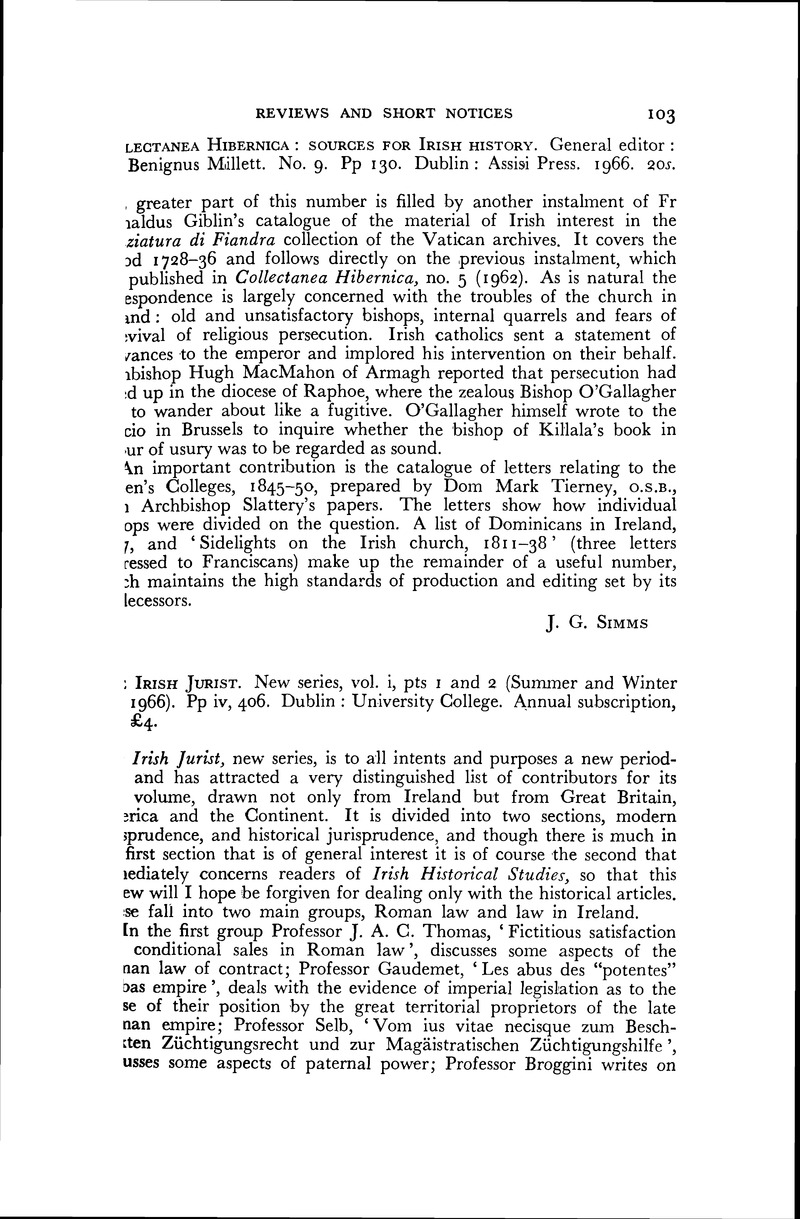No CrossRef data available.
Published online by Cambridge University Press: 28 July 2016

1 See Plucknett, T.F.T., Legislation of Edward I, pp. 5, 105–6, 108–9.Google Scholar
2 He accepts the view that in 1277-80 there was a general demand from Irish laymen for English law : I am now rather inclined to hold that the movement, led as it was by ecclesiastics, was a manifestation of the reform movement in the church, directed against such things as the Brehon law of marriage.
3 There is no evidence that I know of that any chief besides O’Neill was involved in the Remonstrance and cf. H. Wood, ‘Letter from Domnal O’Neill to Fineen MacCarthy, 1317’ (R.I.A. Proc, xxxvii, c, pp. 141–8).
4 See Lapsley, G.T., Crown, community and parliament, p. 323.Google Scholar This theory of course applied to the lands of the church as well as to those of laymen, and care was taken in Ireland to see that churches had confirmations of their lands. See Chartul. St Mary’s, Dublin, i. 138.
5 Pipe roll 14 John, pp. 7, 20, 32, 38, 62.
6 P.R.I, rep. D.K. 35, p. 29; Cal. doc. Ire., 1171–1251, no. 2295. See also Crede mihi, p. 63. In de Lacy’s grant the word is bochani, which might suggest a derivation from bothach. I have not found this form elsewhere.
7 Cal. doc. Ire., 1252–84, nos 52, 717.
8 See The pipe roll of Cloyne, pp 8, 26.
9 Ibid., p. 8; Cal. pat. rolls, 1317–21, p. 563.
10 Cal. doc. Ire., 1302–1307, no. 670; Red Book of Ormond, p. 25.
11 Cal. rot. pat. Hib., p. 79, no. 123.
12 Cal. Ormond deeds, ii, no. 374, and cf. Pipe roll of Cloyne, pp 38–9.
13 See Cam, H.M. Liberties and communities in medieval England, pp 134–5.Google Scholar